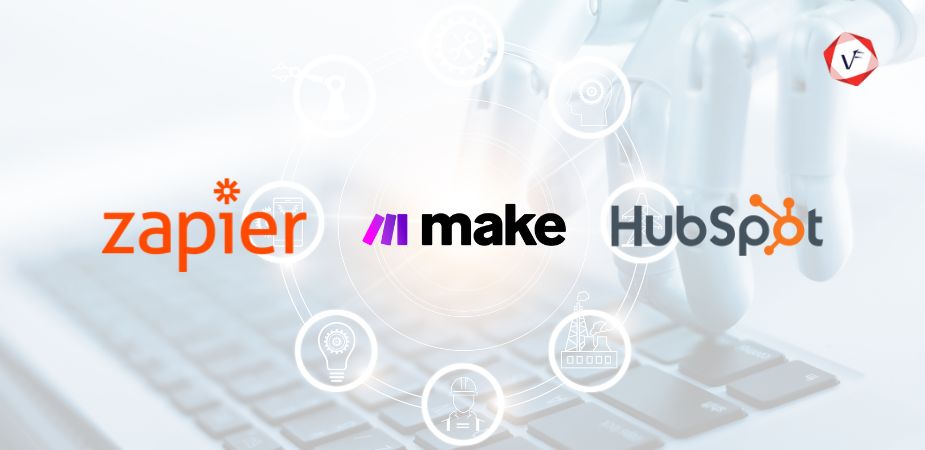What Are Workflow Automation Tools?
Workflow automation tools help you connect the apps you use every day—like Gmail, Slack, Google Sheets, Trello, Notion, and more—so that they can work together automatically.
Here’s an example:
Someone fills out a form on your website. Without automation, you’d manually copy their info, send them a thank-you email, and inform your sales team.
With a workflow automation tool, all these steps happen automatically.
You just set the rules once, and the system takes over. This saves time, avoids errors, and keeps everything running smoothly.
1. Zapier – Best for Simple, Everyday Automation
Getting to Know Zapier
Zapier is one of the easiest automation tools available. You don’t need to know coding or have technical skills. It works by connecting two or more apps and setting rules for what should happen when something is triggered.
Each automation in Zapier is called a Zap. Each Zap includes two main steps:
Trigger: The event that starts the process (like receiving a new email).
Action: What happens next (like saving that email to a Google Doc).
Zapier connects with over 6,000 apps, which means it likely works with almost any tool you’re already using.
Why Zapier Stands Out in 2025
Zapier continues to be a favorite because it’s easy to use and constantly improving. It now offers smarter suggestions using AI. For example, if it notices you use certain tools often, it can suggest Zaps you might find helpful.
The platform also has thousands of ready-to-use templates, so you don’t have to start from scratch.
Who Can Benefit from Using Zapier?
Zapier works well for:
- Freelancers or solopreneurs who need to save time
- Small teams that don’t have a dedicated tech person
- Marketing professionals who work across many platforms
Simple Use Cases
- Add new email subscribers to your Mailchimp list automatically
- Send a Slack message every time you get a form submission
- Save new leads from Facebook Ads into Google Sheets
- Email a client when a Trello task moves to “completed”
Zapier is a great first step if you’re just getting started with automation.
2. Make (formerly Integromat) – Best for Advanced and Visual Automation
Getting to Know Make
Make is a powerful automation platform that lets you build complex workflows using a visual editor. If you enjoy seeing how things connect, Make’s flowchart-style setup will feel comfortable.
It offers greater flexibility compared to Zapier. You can add delays, loops, filters, conditions, and even small bits of code if you want. It’s not as simple as Zapier, but it’s much more flexible.
Why Make Stands Out in 2025
In 2025, Make has expanded its app library and improved its visual editor. It also runs faster and handles larger workflows more efficiently than before. You can now create custom dashboards to track the performance of your automations.
Make is also budget-friendly, especially for users who need to automate complex processes.
Who Can Benefit from Make?
Make is a strong choice if:
- You have technical skills or are comfortable learning
- You want to automate multi-step workflows with custom rules
- You’re managing multiple systems or large teams
Simple Use Cases
- Send WhatsApp messages when customers submit orders
- Update inventory across systems when a product is sold
- Auto-generate invoices and send them to clients
- Create multi-branch workflows based on customer actions
Make is ideal for businesses that want deeper control and more detailed automation.
3. HubSpot – Best for All-in-One Marketing, Sales, and Support Automation
Getting to Know HubSpot
HubSpot is a complete CRM (Customer Relationship Management) platform. That means it doesn’t just do automation—it also helps you manage your customers, run marketing campaigns, handle support tickets, and more.
Its automation features are deeply tied to customer data. So if a lead opens your email or visits your pricing page, HubSpot can automatically trigger the next step, like assigning the lead to a salesperson or sending a follow-up message.
Why HubSpot Stands Out in 2025
HubSpot has improved its AI tools in 2025, offering smarter insights and suggestions. It now personalizes email campaigns based on customer behavior, helping businesses engage better without extra effort.
The automation builder is also easier to use, with a drag-and-drop interface and ready-made templates for emails, sales sequences, and customer support follow-ups.
Who Can Benefit from HubSpot?
HubSpot is best for:
- Businesses that want to automate marketing, sales, and customer support in one place
- Teams that need a full CRM system, along with automation
- Growing companies with a focus on customer experience
Simple Use Cases
- Automatically send a welcome email to new leads
- Assign leads to sales reps based on location
- Send reminders to customers who haven’t responded
- Track customer activity and send personalized content
HubSpot is a great option if you’re ready to invest in an all-in-one solution.
How to Pick the Right Tool
Each tool on this list is excellent, but your choice depends on what you need right now. Here’s a simple way to decide:
Go with Zapier if you want something quick and easy. It’s great for automating basic tasks across different apps without learning curves.
Try Make if you want more control and are comfortable working with visual tools. It’s ideal for handling complicated workflows or connecting multiple apps with conditions.
Choose HubSpot if you want everything in one place—email marketing, customer tracking, sales pipelines, and automation—all tightly integrated.
If you’re unsure, test the free versions first. Each tool offers a free plan or trial so you can try it out before upgrading.
Real-Life Examples from 2025
Let’s see how people are using these tools right now:
A Freelance Designer Uses Zapier
She connects her website contact form to Google Sheets, then sends an automated email with her portfolio. When a client replies, she gets a Slack notification.
An E-commerce Business Uses Make
They manage orders, stock levels, customer data, and invoices across multiple platforms. Make ties it all together—automatically adjusting inventory and sending receipts.
A Software Startup Uses HubSpot
Their marketing team runs campaigns, collects leads, and follows up—all within HubSpot. The sales team gets notified when someone shows interest, and support staff follow up post-sale, all without switching tools.
Why Automation Is Essential Right Now
As more businesses go digital, time-saving tools are not just helpful—they’re essential. Handling work manually often leads to delays. Mistakes cost money. And customers expect faster, smoother experiences.
With automation:
- Teams work more efficiently
- Fewer errors happen
- Customer questions are answered sooner
- Businesses grow without needing to hire more people right away
Whether you’re a solo worker or running a large team, automation can make a big difference in how you manage work and grow.
Final Thoughts
Workflow automation is a practical solution to everyday problems. You don’t need to be a developer to use it. With tools like Zapier, Make, and HubSpot, you can get started with just a few clicks.
Start small. Try automating a few simple things first. See how it goes. Then, slowly build more workflows over time.
Once you see how much time and energy it saves, you’ll wonder how you ever worked without it.





